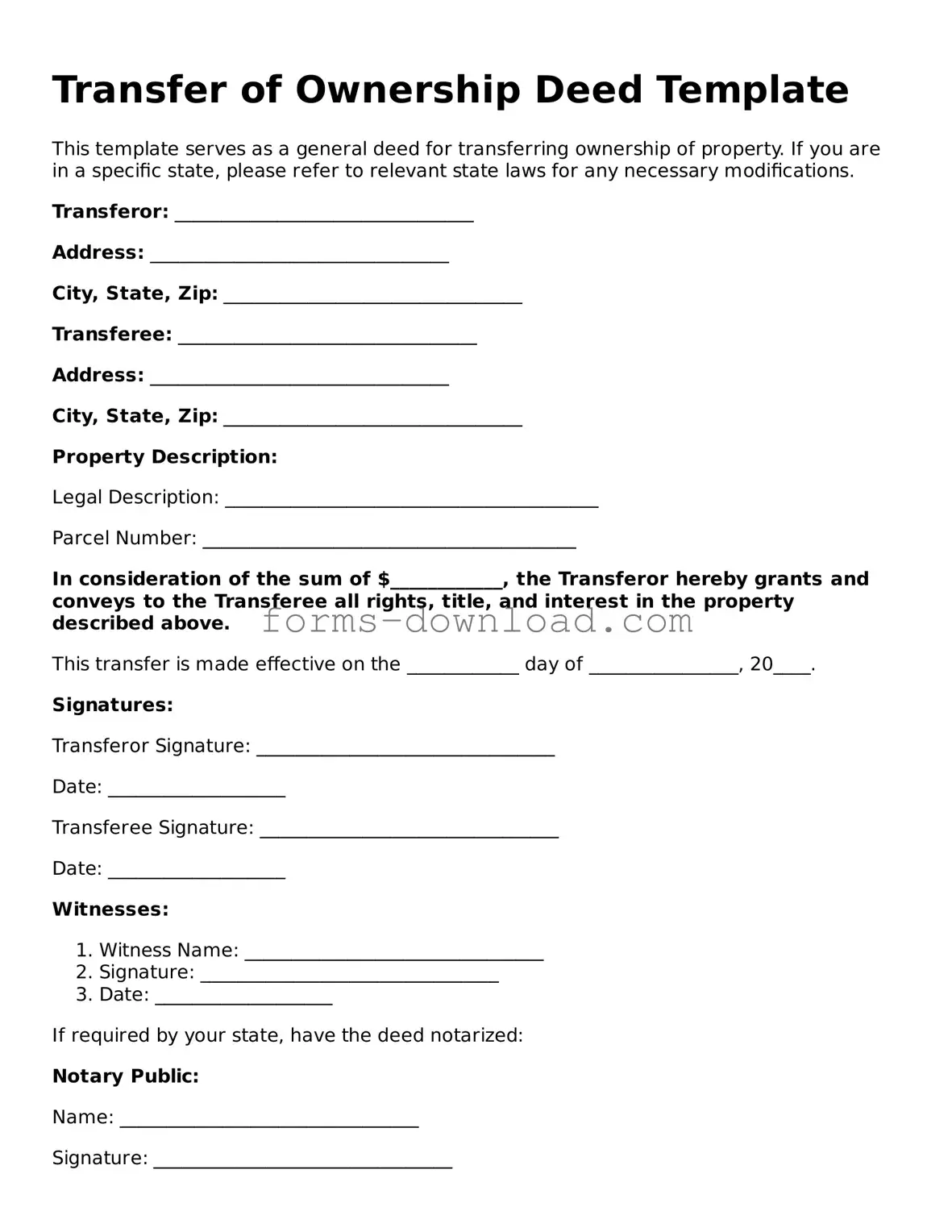Transfer of Ownership Deed Template
This template serves as a general deed for transferring ownership of property. If you are in a specific state, please refer to relevant state laws for any necessary modifications.
Transferor: ________________________________
Address: ________________________________
City, State, Zip: ________________________________
Transferee: ________________________________
Address: ________________________________
City, State, Zip: ________________________________
Property Description:
Legal Description: ________________________________________
Parcel Number: ________________________________________
In consideration of the sum of $____________, the Transferor hereby grants and conveys to the Transferee all rights, title, and interest in the property described above.
This transfer is made effective on the ____________ day of ________________, 20____.
Signatures:
Transferor Signature: ________________________________
Date: ___________________
Transferee Signature: ________________________________
Date: ___________________
Witnesses:
- Witness Name: ________________________________
- Signature: ________________________________
- Date: ___________________
If required by your state, have the deed notarized:
Notary Public:
Name: ________________________________
Signature: ________________________________
Date: ___________________
